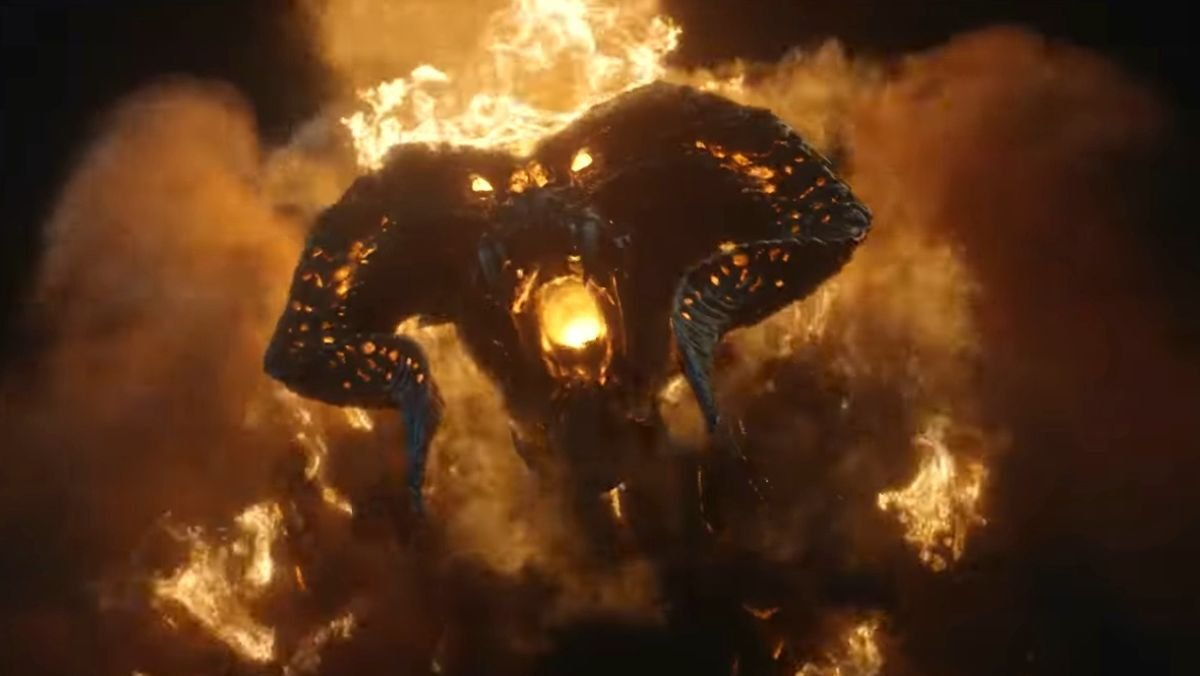Middle-earth is full of the fantastic, but it’s not all sunshine and roses. For all of the mystical Elves and cheery Hobbits, there are a lot of terrifying monsters that pop up throughout J.R.R. Tolkien’s writings, too. So, it’s only right that we celebrate some of the most menacing monsters of Middle-earth from The Hobbit, The Lord of the Rings, and The Silmarillion.
Note: We did not list individual villains, like Morgoth or the Witch-king. Instead, we focused on villain types and groups that show up throughout the story, with occasional shout-outs to important individuals who belong to certain groups.
The Balrogs: Fiery Demons, Whips, and (Maybe) Wings
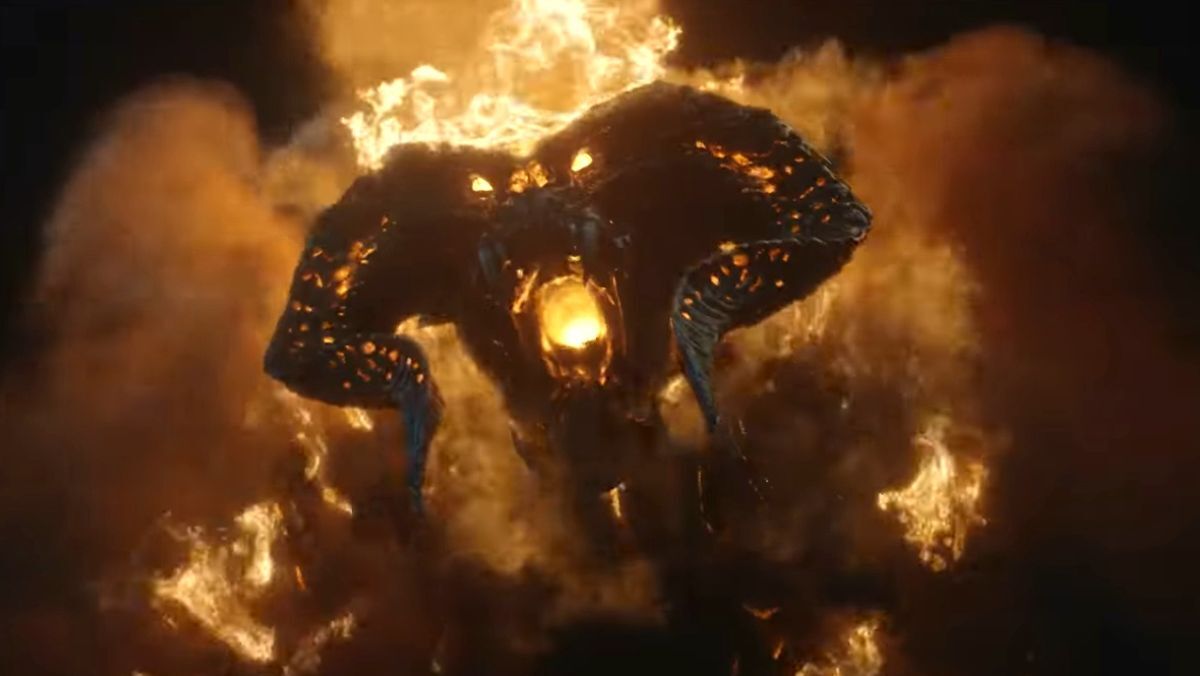
Everyone and their mother knows that Gandalf fights a Balrog on the Bridge of Khazad-dûm. But did you know that the villain is just one representative of an entire group of fiery demons? Collectively called the Valaraukar, the Balrogs enter Middle-earth at the beginning of its history. They join with the villain Morgoth, and it’s never quite clear how many of them there are. They are depicted as humanoid in body, but shadowy with fiery weaponry, especially whips. There is a long-standing debate about whether they have wings or not.
The Silmarillion introduces this terrifying group by saying, “Dreadful among these spirits were the Valaraukar, the scourges of fire that in Middle-earth were called the Balrogs, demons of terror.” They show up repeatedly in that book, dueling heroes on mountain tops, sacking hidden cities, fighting battles under the stars, and generally causing havoc and destruction everywhere they go. While many of them are destroyed over the course of the story, obviously, one of them survives all the way to The Lord of the Rings before finally being snuffed out by Gandalf.
The Dragons: Cold, Hot, and Always Scary
Dragons, also called Great Worms, show up occasionally in Tolkien’s writing. The most famous one, of course, is Smaug from The Hobbit, but even in that book, it introduces the Golden Dragon by saying, “There were lots of dragons in the North in those days…” In other words, while Smaug is particularly threatening, he’s just one in a long line of serpentine monsters throughout the millennia of Middle-earth history.
The first of these is Glaurung, the Father of Dragons. He’s killed by the hero Turin. Some Dragons, like Glaurung, don’t have wings. Others do, including Ancalagon the Black, the greatest Dragon of all time (who is killed at the end of the First Age, long before The Lord of the Rings). Some can spout fire (fire-drakes), others can’t (cold-drakes). Some fight in armies. Others pester Dwarven households on their own.
One called Scatha attacks the Rohirrim, and one of their kings kills him and makes a necklace out of his teeth. While their specific makeup is vague, most of the Dragons we meet in Tolkien’s writings are depicted as demonic in spirit. They are long-lived, can talk and hypnotize others (something called dragon-spell), and are subtle and strategic.
The Spirit World: Terrifying, Creepy, and Diverse
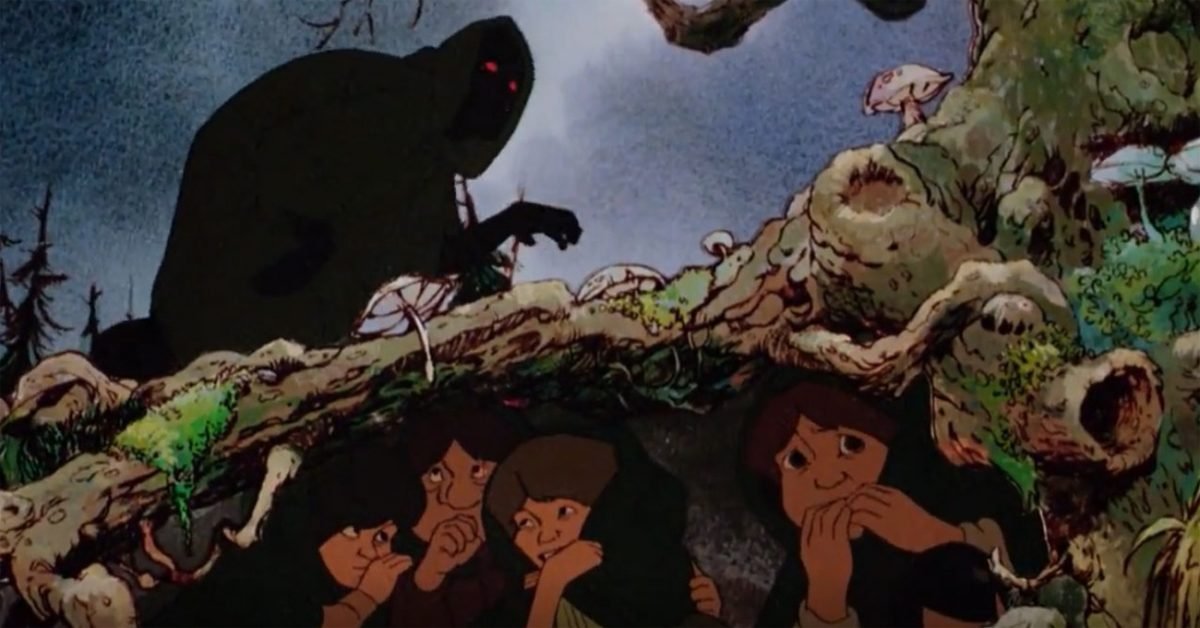
The spirit world in Tolkien’s writings is difficult to discern, but there are moments when we catch a glimpse into the “other side.” Frodo, for instance, sees into the spirit world a lot during his quest. Elves, Wizards, and even some Human heroes operate in that world. There are lots of baddies in that vague yet terrifying space, too.
The Nazgûl are the obvious ones. The Black Riders are Nine perverted Men with Rings of Power that overextended their lives (think butter scraped over too much bread) and became spirits of terror, subjected to their Dark Lord’s will.
Another supernatural manifestation takes place in The Two Towers. When Frodo, Sam, and Gollum pass through the Dead Marshes, they encounter ghosts of Men, Elves, and Orcs haunting the swampy ground with flickering, unreachable candles. When the four Hobbits leave the Shire early in the story, in the book version, they pass through a royal graveyard haunted by Barrow-wights (who also showed up in Season 3 of The Rings of Power). Even the snow-clad mountain Caradhras that The Fellowship of the Ring fails to cross in the book and movie by the same name is described as having an antagonistic spirit of otherworldly malice.
Spiders: Demonic, Gigantic, Progressively Smaller
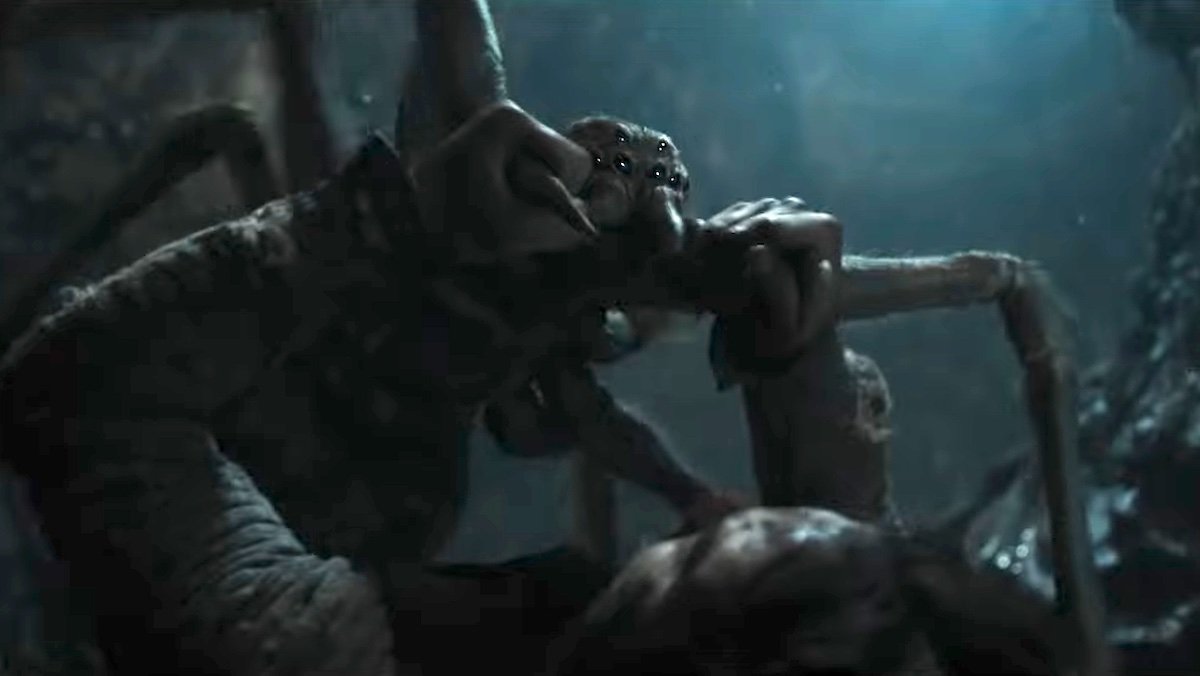
Arachnids always make the cut for a horror element in any story. It’s just a fact — and Tolkien incorporated the eight-legged monsters into most of his books. The most famous arachnoid episode comes in The Hobbit, when Bilbo and the Dwarves fight off a horde of the menacing creatures in Mirkwood. But the truth is, those giant spiders are actually the smallest of the group, and they’re the last generation we see in Middle-earth.
Before the spiders of Mirkwood, we get Shelob. She shows up in The Lord of the Rings and is clearly more than a spider. In fact, in The Two Towers book, she’s described as “an evil thing in spider-form.” We also find out that the spiders in places like Mirkwood are actually her descendants. Tolkien calls Shelob “Shelob the Great, last child of Ungoliant to trouble the unhappy world.” Who’s Ungoliant, you ask? Great question.
Ungoliant is the ultimate arachnid in Middle-earth. She shows up in The Silmarillion and is, for lack of a better word, kind of like a physical form of darkness. Ungoliant is a very powerful demon who, like her daughter later, takes the form of a monstrous spider. She is endlessly hungry and is associated with famine and insatiable desire. She is so powerful that, at one point, she even beats Morgot in a one-on-one battle — the only creature in Middle-earth history to do so.
Fell Beasts: Strange, Unknown, and Super Useful
Next up, we have one of the more oddball monsters. When we first meet the Black Riders, they’re, well, riding on black horses. Kinda self explanatory there. Later in the story, though, they show up on upgraded rides called fell beasts. These are pure horror creatures, bred in darkness by Sauron.
In The Return of the King book, we get the chilling description of their origin: “A creature of an older world maybe it was, whose kind, lingering in forgotten mountains cold beneath the Moon, outstayed their day, and in hideous eyrie bred this last untimely brood, apt to evil.” From there, Sauron stepped in, and the book explains, “The Dark Lord took it, and nursed it with fell meats, until it grew beyond the measure of all other things that fly; and he gave it to his servant to be his steed.”
The fell beasts aren’t particularly involved characters. But they are clearly marked by evil, and their close association with their riders makes them a strange, horrifying, and super useful Middle-earth monster.
Orcs, Trolls, and Werewolves, Oh My!
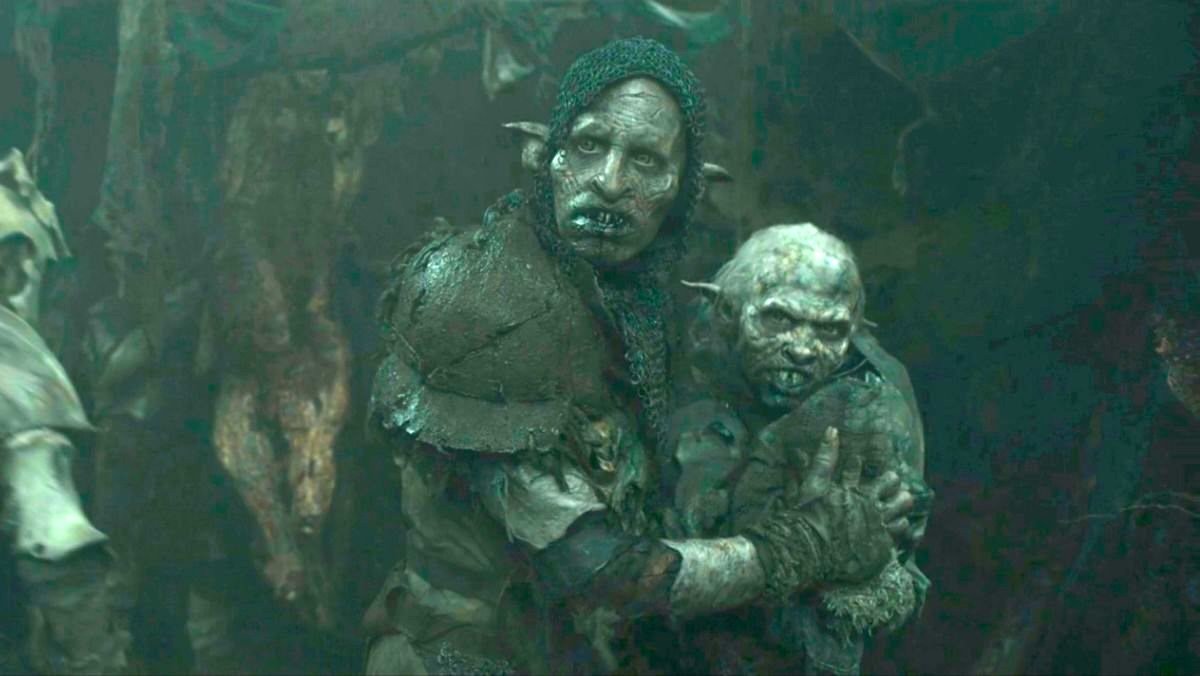
We can’t get through a list like this without at least a nod to several of the most iconic horror story elements of Middle-earth, starting with the most famous of all: the Orc. Orcs (and Goblins) are the canon fodder of evil. They populate armies, and they pop up in many manifestations. Their history is unclear. Tolkien himself seemed unsure, and at different times said that they came from Men, Elves, and various other alternatives. Nevertheless, they are the monstrous staple that Middle-earth fans have come to know and love.
Another classic is Tolkien’s Trolls. These are the lumbering, half-baked creatures that are the first villains we meet in The Hobbit. Despite being all bronze and no brains, they’re always a compelling part of the story when they pop up.
The same goes for Wolves. Tolkien toys a lot with the concept of the wolf in his storytelling. In The Silmarillion, we get werewolves (Sauron even takes on that form at one point), and of course, the talking Wargs of The Hobbit and Lord of the Rings are well-known, sentient servants of the Dark Lord, as well.
Other Beasts and Corrupted Creatures
Tolkien references several other monstrous entities throughout his writing. Some are more clear, others less so — but we did our best to round up some of the best of the bunch. The first one we have to include here is the Watcher in the Water. The multi-legged creature that attacks The Fellowship at the doors of Moria is a mysterious creature.
There are several others like it in various adaptations, like the sea serpents in Prime Video’s The Rings of Power and the serpentine creature living in the swamps in that same show. These harken back to a line in The Two Towers book that Gandalf says to his companions after returning from falling off the Bridge of Khazad-dûm, where he reports, “Far, far below the deepest delvings of the Dwarves, the world is gnawed by nameless things. Even Sauron knows them not. They are older than he.” Disturbing stuff.
Above ground, there are similar “beasts” and monsters. The most famous of these is the Mumakil or Oliphaunt. These elephant-like ancestors are gigantic and are regularly used as terrors in war, stampeding people and rampaging through battles with blood-drenched tusks. There are creatures in the same vein. When Minas Tirith is besieged, for example, the battering ram Grond is pulled by creatures Tolkien simply refers to as “great beasts.”
Good Monsters: Equally Terrifying, Better Results
Finally, Tolkien isn’t afraid to paint a force of good as scary, too. Some heroes, like Gandalf, are frightening in their own right. Many of the creatures involved in the Middle-earth story are equally menacing. The Eagles, for instance, are a terror to Orcs, Goblins, and all of Sauron’s servants.
The Ents and their Huorns (basically, partly awake trees) have a bitter fight with Saruman’s Uruk-hai, and when they win, none of their enemies are left alive. The Army of the Dead is a spiritual force of terror that, in the books at least, doesn’t even have to physically fight thanks to their horrific presence. Even Tom Bombadil is a menacing monster to his enemies (albeit a musically inclined one).
When he encounters a Barrow-wight in The Fellowship of the Ring book, the villain shrieks in fear before meeting his song-inspired doom. Whether it’s a good guy or a bad one, there’s no shortage of monsters in Middle-earth. As more adaptations come out — like the upcoming The Hunt for Gollum movie — the pantheon of terror will only continue to grow, keeping us disturbingly entertained at every step.
The post The Most Menacing Monsters of Middle-earth appeared first on Nerdist.
This articles is written by : Nermeen Nabil Khear Abdelmalak
All rights reserved to : USAGOLDMIES . www.usagoldmines.com
You can Enjoy surfing our website categories and read more content in many fields you may like .
Why USAGoldMines ?
USAGoldMines is a comprehensive website offering the latest in financial, crypto, and technical news. With specialized sections for each category, it provides readers with up-to-date market insights, investment trends, and technological advancements, making it a valuable resource for investors and enthusiasts in the fast-paced financial world.
